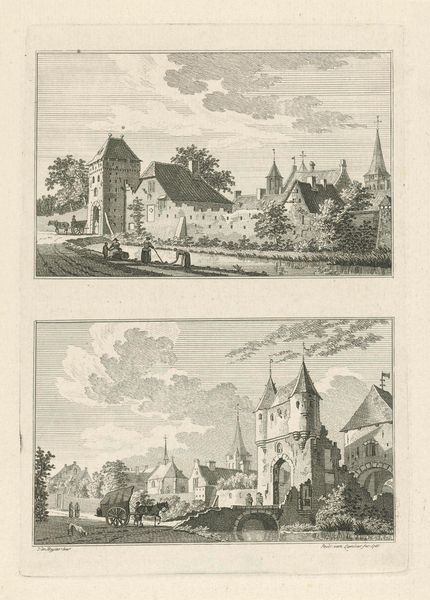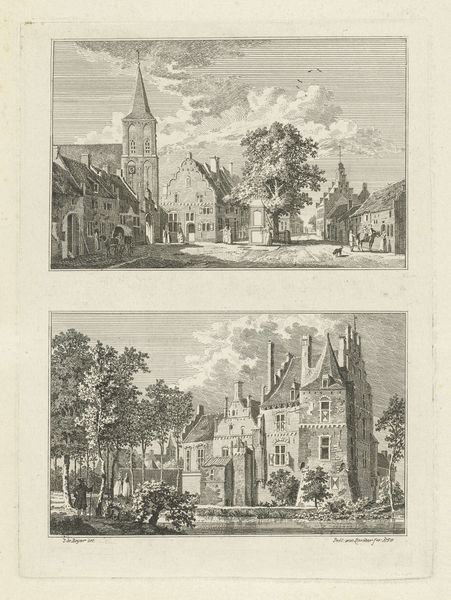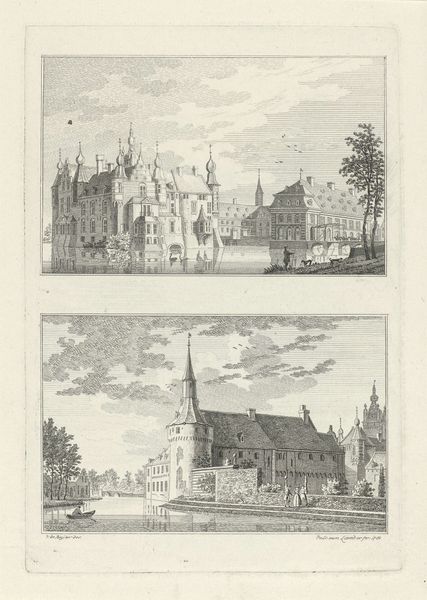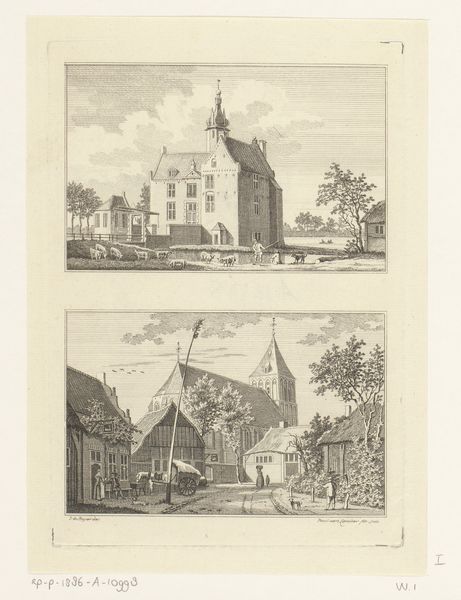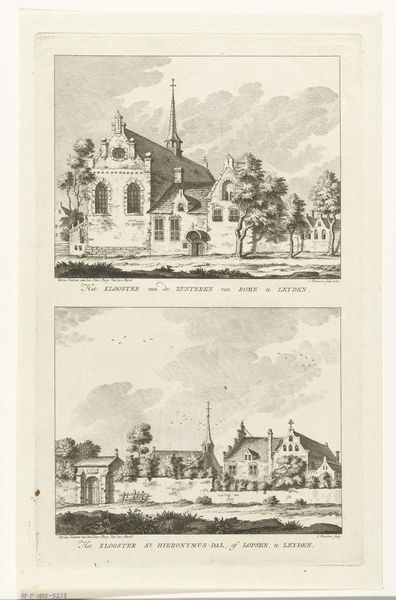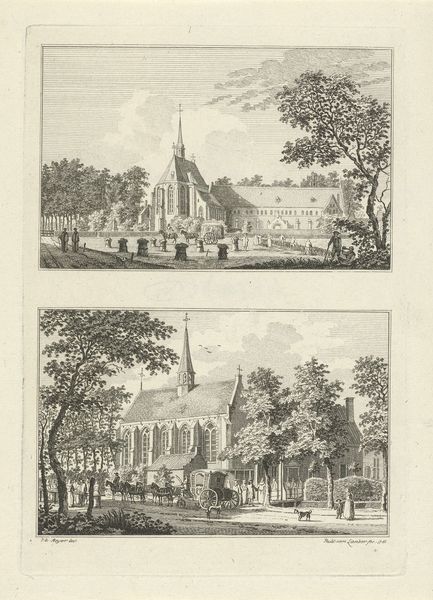
Dimensions: height 205 mm, width 150 mm
Copyright: Rijks Museum: Open Domain
Paulus van Liender created 'Kasteel Offenberg' around 1745, using etching and engraving to depict two views of the castle. The composition is divided horizontally, presenting two distinct perspectives, which creates a comparative visual experience, drawing the viewer's eye between the two scenes. The upper scene captures the castle in its broader landscape, while the lower scene offers a closer view, focusing on architectural details and the immediate surroundings. Van Liender's technique employs hatching to define forms, creating a structured interplay of light and shadow. This formal quality, seen in the meticulous rendering of architectural elements, evokes a sense of depth. Each line contributes to a network of signs that invite decoding. The artist uses perspectival techniques and semiotic codes related to architecture and landscape. Ultimately, this approach emphasizes that art is a construct of meaning and representation, where formal qualities combine to challenge our fixed perceptions.
Comments
No comments
Be the first to comment and join the conversation on the ultimate creative platform.

